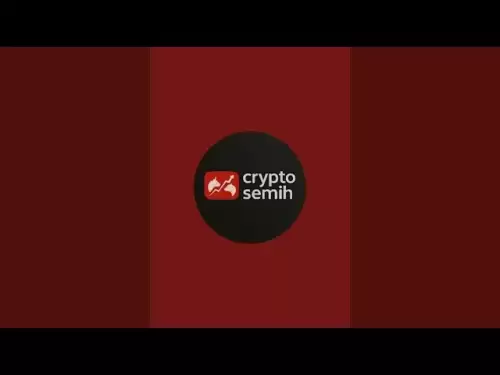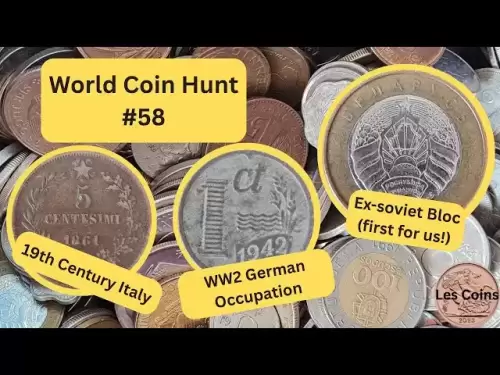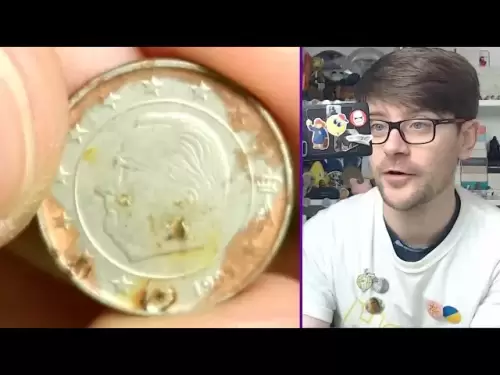-
 Bitcoin
Bitcoin $105,771.3790
0.21% -
 Ethereum
Ethereum $2,508.3663
-0.47% -
 Tether USDt
Tether USDt $1.0006
0.01% -
 XRP
XRP $2.2619
4.07% -
 BNB
BNB $652.2987
0.28% -
 Solana
Solana $152.5267
1.84% -
 USDC
USDC $1.0000
0.01% -
 Dogecoin
Dogecoin $0.1842
0.29% -
 TRON
TRON $0.2818
-1.77% -
 Cardano
Cardano $0.6698
1.52% -
 Hyperliquid
Hyperliquid $34.8497
0.32% -
 Sui
Sui $3.2262
-0.32% -
 Chainlink
Chainlink $13.7538
-0.11% -
 Avalanche
Avalanche $21.0505
2.36% -
 UNUS SED LEO
UNUS SED LEO $9.2537
0.14% -
 Stellar
Stellar $0.2681
1.36% -
 Bitcoin Cash
Bitcoin Cash $412.1395
0.60% -
 Toncoin
Toncoin $3.1728
-0.15% -
 Shiba Inu
Shiba Inu $0.0...01250
-1.21% -
 Hedera
Hedera $0.1695
0.84% -
 Litecoin
Litecoin $87.2697
-1.02% -
 Polkadot
Polkadot $4.0250
0.01% -
 Monero
Monero $327.3117
-0.28% -
 Ethena USDe
Ethena USDe $1.0011
-0.03% -
 Bitget Token
Bitget Token $4.6543
-0.25% -
 Dai
Dai $0.9998
-0.01% -
 Pepe
Pepe $0.0...01167
2.10% -
 Pi
Pi $0.6326
-0.83% -
 Uniswap
Uniswap $6.3187
-0.27% -
 Aave
Aave $253.6077
-1.21%
How to view smart contracts in Trust Wallet? Are there risks in contract interaction?
To view smart contracts in Trust Wallet, use the DApps browser to connect to a DApp, then find and verify the contract address on a blockchain explorer like Etherscan.
May 06, 2025 at 11:00 pm
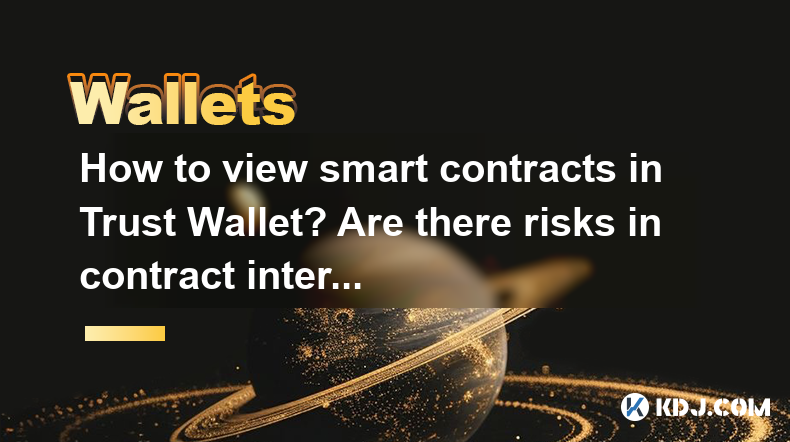
How to View Smart Contracts in Trust Wallet? Are There Risks in Contract Interaction?
Trust Wallet is a popular mobile cryptocurrency wallet that supports a wide range of cryptocurrencies and tokens, including those based on smart contracts. Smart contracts are self-executing contracts with the terms of the agreement directly written into code. They run on blockchain platforms like Ethereum, and users often interact with them through decentralized applications (dApps). This article will guide you through the process of viewing smart contracts in Trust Wallet and discuss the potential risks associated with interacting with them.
Understanding Smart Contracts in Trust Wallet
Before diving into how to view smart contracts, it's essential to understand what they are and how they function within Trust Wallet. Smart contracts are programs stored on a blockchain that automatically execute when predetermined conditions are met. In Trust Wallet, you can interact with these contracts to perform various functions, such as token swaps, staking, and more.
Steps to View Smart Contracts in Trust Wallet
To view smart contracts in Trust Wallet, follow these detailed steps:
- Open Trust Wallet: Launch the Trust Wallet app on your mobile device.
- Navigate to the DApps Browser: Tap on the "DApps" icon at the bottom of the screen. This will open the DApps browser, where you can access various decentralized applications.
- Select a DApp: Choose a DApp that you want to interact with. For example, if you want to view a token's smart contract, you might select a DApp like Uniswap or PancakeSwap.
- Connect Your Wallet: Once you've selected a DApp, you'll need to connect your Trust Wallet to it. Tap on the "Connect" button and follow the prompts to authorize the connection.
- Access the Smart Contract: After connecting, navigate through the DApp to find the section where you can view the smart contract details. This might be under a "Contract" or "Token Info" section.
- View Contract Address: The smart contract address is usually a long string of characters. You can copy this address to view more details on a blockchain explorer like Etherscan or BscScan.
Verifying Smart Contracts
Verifying the authenticity of a smart contract is crucial before interacting with it. Here's how you can do it:
- Copy the Contract Address: From the DApp, copy the smart contract address as mentioned in the previous section.
- Visit a Blockchain Explorer: Open a blockchain explorer like Etherscan (for Ethereum) or BscScan (for Binance Smart Chain) in your web browser.
- Paste the Contract Address: Enter the copied contract address into the search bar of the blockchain explorer and hit enter.
- Check Contract Details: On the explorer, you'll see detailed information about the smart contract, including its source code, transaction history, and more. Look for a "Verified" status, which indicates that the contract's source code has been verified and is publicly available.
Risks Associated with Smart Contract Interaction
Interacting with smart contracts can be risky, and it's important to be aware of these risks:
- Code Vulnerabilities: Smart contracts are written in code, and like any software, they can have bugs or vulnerabilities. If a smart contract is exploited, it could lead to loss of funds.
- Phishing Scams: Malicious actors may create fake DApps or smart contracts to trick users into connecting their wallets and approving transactions that drain their funds.
- Rug Pulls: In some cases, developers may create a smart contract, attract users to invest, and then suddenly withdraw all the funds, leaving investors with worthless tokens.
- Unverified Contracts: Interacting with unverified smart contracts can be particularly risky, as you have no way to verify the code's integrity.
Best Practices for Safe Smart Contract Interaction
To minimize the risks associated with smart contract interaction, follow these best practices:
- Verify the Contract: Always verify the smart contract on a blockchain explorer before interacting with it. Look for a "Verified" status and review the source code if possible.
- Use Trusted DApps: Stick to well-known and reputable DApps. Research the DApp and its developers before connecting your wallet.
- Start Small: When interacting with a new smart contract, start with small amounts to test its functionality and reliability.
- Keep Software Updated: Ensure that your Trust Wallet app and any DApps you use are up to date to protect against known vulnerabilities.
- Be Wary of Approvals: Be cautious when approving transactions, especially those that request unlimited allowances. Always review the transaction details carefully.
Frequently Asked Questions
Q: Can I view smart contracts directly within the Trust Wallet app without using a DApp?
A: No, Trust Wallet does not currently offer a feature to view smart contracts directly within the app. You need to use the DApps browser to connect to a DApp and then view the smart contract details.
Q: Is it safe to interact with smart contracts on the Binance Smart Chain?
A: Interacting with smart contracts on any blockchain, including the Binance Smart Chain, carries risks. However, by following best practices such as verifying contracts and using trusted DApps, you can minimize these risks.
Q: What should I do if I suspect a smart contract I've interacted with is malicious?
A: If you suspect a smart contract is malicious, immediately disconnect your wallet from the DApp, and do not approve any further transactions. Report the issue to the DApp's developers and consider seeking help from a blockchain security expert.
Q: Can I revoke permissions granted to a smart contract in Trust Wallet?
A: Yes, you can revoke permissions granted to a smart contract using tools like Revoke.cash. You'll need to connect your wallet to the Revoke.cash website and follow the instructions to revoke any unwanted allowances.
Disclaimer:info@kdj.com
The information provided is not trading advice. kdj.com does not assume any responsibility for any investments made based on the information provided in this article. Cryptocurrencies are highly volatile and it is highly recommended that you invest with caution after thorough research!
If you believe that the content used on this website infringes your copyright, please contact us immediately (info@kdj.com) and we will delete it promptly.
- Welcome to the US Crypto News Morning Briefing—your essential rundown of the most important developments in crypto for the day ahead.
- 2025-06-09 08:35:13
- Shibarium: The Blockchain for The People
- 2025-06-09 08:35:13
- The Best Altcoins to Buy Now Are the Ones That Caught Serious Attention During TOKEN2049
- 2025-06-09 08:30:12
- Robert Kiyosaki: Biggest Market Crash Happening Now
- 2025-06-09 08:30:12
- Binance Coin (BNB) is gaining fresh interest as investors closely watch a potential breakout
- 2025-06-09 08:25:13
- Solaxy ($SOLX) – The Layer 2 Solution That Makes More Sense Than Ever After Critical Issues with the Solana Blockchain
- 2025-06-09 08:25:13
Related knowledge
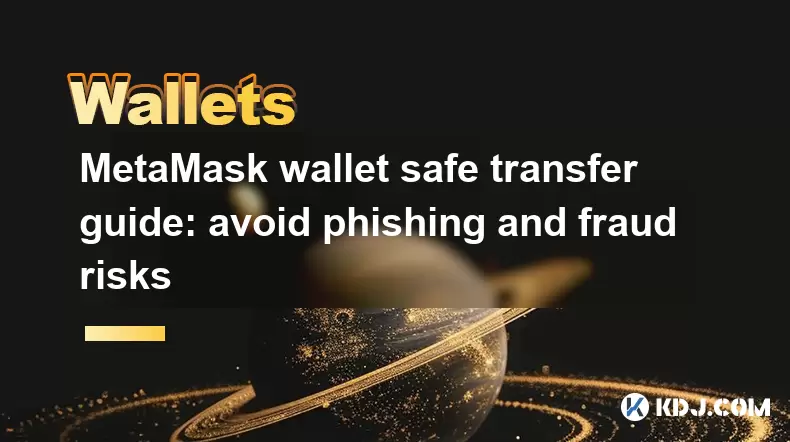
MetaMask wallet safe transfer guide: avoid phishing and fraud risks
Jun 04,2025 at 01:49pm
In the world of cryptocurrencies, securing your digital assets is paramount. One popular tool for managing your cryptocurrencies is MetaMask, a browser extension and mobile app that allows you to interact with the Ethereum blockchain. However, with the rise in popularity of MetaMask, there has also been an increase in phishing and fraud attempts targeti...
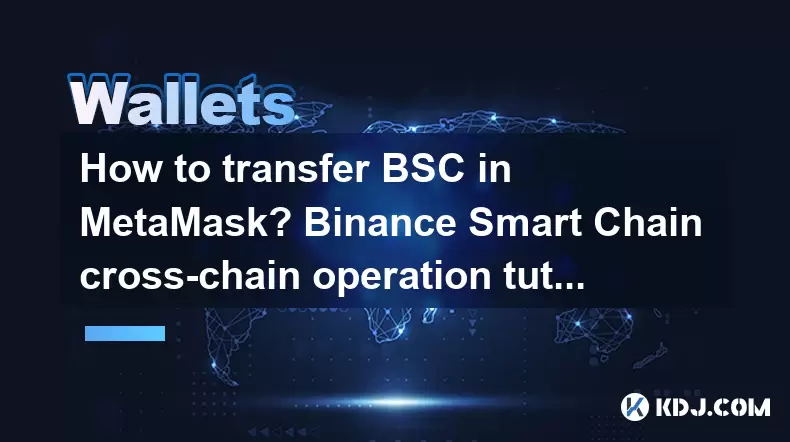
How to transfer BSC in MetaMask? Binance Smart Chain cross-chain operation tutorial
Jun 05,2025 at 03:49pm
Transferring BSC (Binance Smart Chain) tokens within MetaMask involves a few crucial steps to ensure a smooth and secure cross-chain operation. In this tutorial, we will walk you through the process of transferring BSC tokens using MetaMask, covering everything from setting up your wallet to executing the transfer. Let's dive in. Setting Up MetaMask for...

MetaMask wallet gas fee setting tips: ways to save transfer costs
Jun 07,2025 at 07:57pm
Introduction to Gas Fees in MetaMaskWhen using MetaMask, one of the most popular Ethereum-based wallets, understanding and managing gas fees is crucial for efficient transactions. Gas fees are payments made to the Ethereum network to process transactions and execute smart contracts. These fees can vary widely based on network congestion and the complexi...

How to add network in MetaMask? Custom RPC and cross-chain transfer guide
Jun 07,2025 at 01:21am
Adding a custom network to MetaMask and understanding how to perform cross-chain transfers can significantly enhance your cryptocurrency experience. This guide will walk you through the detailed steps of adding a custom network using a Custom RPC in MetaMask and will also cover the essentials of cross-chain transfers. Understanding Custom RPC in MetaMas...
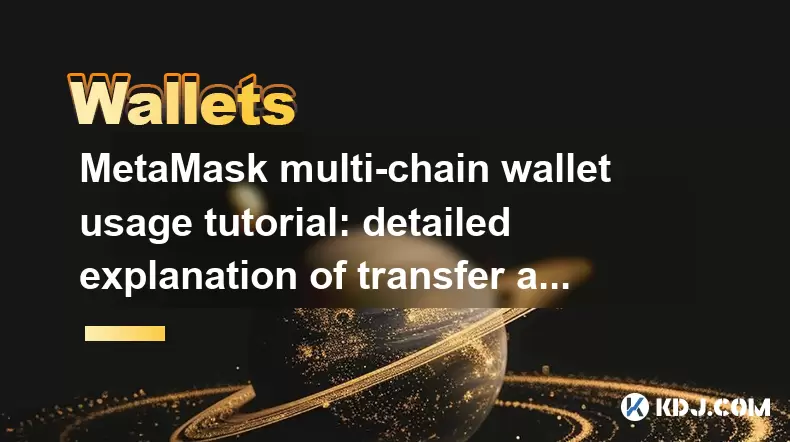
MetaMask multi-chain wallet usage tutorial: detailed explanation of transfer and cross-chain operation
Jun 07,2025 at 03:50am
MetaMask has emerged as a leading multi-chain wallet in the cryptocurrency space, enabling users to manage a variety of digital assets across different blockchains. This tutorial provides a detailed explanation of how to use MetaMask for transferring tokens and performing cross-chain operations. Whether you're a beginner or an experienced user, this gui...
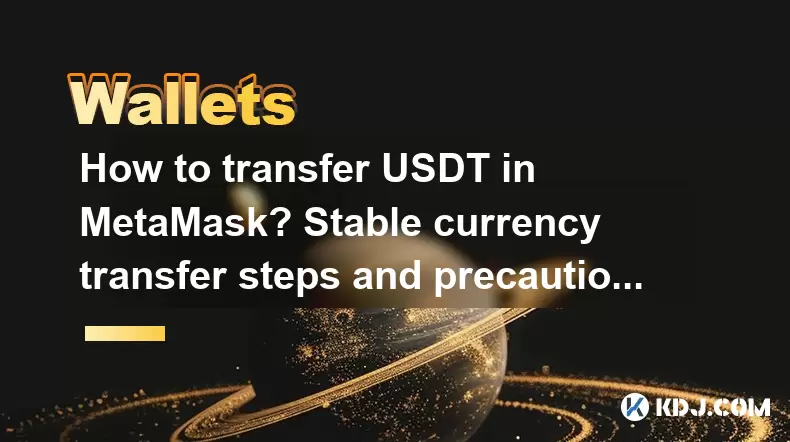
How to transfer USDT in MetaMask? Stable currency transfer steps and precautions
Jun 04,2025 at 07:28pm
Transferring USDT (Tether) within the MetaMask wallet involves several steps and requires careful attention to detail to ensure the transaction goes smoothly. In this article, we will guide you through the process of transferring USDT using MetaMask, highlighting important steps and precautions to keep in mind. Understanding USDT and MetaMaskUSDT, or Te...

MetaMask wallet safe transfer guide: avoid phishing and fraud risks
Jun 04,2025 at 01:49pm
In the world of cryptocurrencies, securing your digital assets is paramount. One popular tool for managing your cryptocurrencies is MetaMask, a browser extension and mobile app that allows you to interact with the Ethereum blockchain. However, with the rise in popularity of MetaMask, there has also been an increase in phishing and fraud attempts targeti...

How to transfer BSC in MetaMask? Binance Smart Chain cross-chain operation tutorial
Jun 05,2025 at 03:49pm
Transferring BSC (Binance Smart Chain) tokens within MetaMask involves a few crucial steps to ensure a smooth and secure cross-chain operation. In this tutorial, we will walk you through the process of transferring BSC tokens using MetaMask, covering everything from setting up your wallet to executing the transfer. Let's dive in. Setting Up MetaMask for...

MetaMask wallet gas fee setting tips: ways to save transfer costs
Jun 07,2025 at 07:57pm
Introduction to Gas Fees in MetaMaskWhen using MetaMask, one of the most popular Ethereum-based wallets, understanding and managing gas fees is crucial for efficient transactions. Gas fees are payments made to the Ethereum network to process transactions and execute smart contracts. These fees can vary widely based on network congestion and the complexi...

How to add network in MetaMask? Custom RPC and cross-chain transfer guide
Jun 07,2025 at 01:21am
Adding a custom network to MetaMask and understanding how to perform cross-chain transfers can significantly enhance your cryptocurrency experience. This guide will walk you through the detailed steps of adding a custom network using a Custom RPC in MetaMask and will also cover the essentials of cross-chain transfers. Understanding Custom RPC in MetaMas...

MetaMask multi-chain wallet usage tutorial: detailed explanation of transfer and cross-chain operation
Jun 07,2025 at 03:50am
MetaMask has emerged as a leading multi-chain wallet in the cryptocurrency space, enabling users to manage a variety of digital assets across different blockchains. This tutorial provides a detailed explanation of how to use MetaMask for transferring tokens and performing cross-chain operations. Whether you're a beginner or an experienced user, this gui...

How to transfer USDT in MetaMask? Stable currency transfer steps and precautions
Jun 04,2025 at 07:28pm
Transferring USDT (Tether) within the MetaMask wallet involves several steps and requires careful attention to detail to ensure the transaction goes smoothly. In this article, we will guide you through the process of transferring USDT using MetaMask, highlighting important steps and precautions to keep in mind. Understanding USDT and MetaMaskUSDT, or Te...
See all articles





















